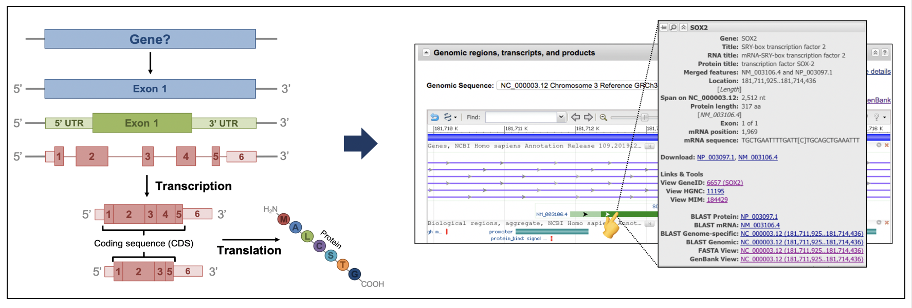
A strong understanding of distinct gene components and the ability to retrieve relevant information from gene databases are necessary to answer a diverse set of biological questions. However, often there is a considerable gap between students’ theoretical understanding of gene structure and applying that knowledge to design laboratory experiments. In order to bridge that gap, our lesson focuses on how to take advantage of readily available gene databases, after providing students with a strong foundation in the central dogma and gene structure. Our instructor-led group activity aids students in navigating the gene databases on their own, which enables them to design experiments and predict their outcomes. While our class focuses on cardiomyocyte differentiation, classes with a different focus can easily adapt our lesson, which can be conducted within a single class period. Our lesson elicits high engagement and learning outcomes from students, who gain a deeper understanding of the central dogma and apply that knowledge to studying gene functions.
Primary Image: Gene structure at various levels of expression and retrieval of corresponding biological information from gene databases. This image contains a screenshot from the NCBI Database, which is an open source: National Center for Biotechnology Information. 2021. SOX2 SRY-box transcription factor 2.